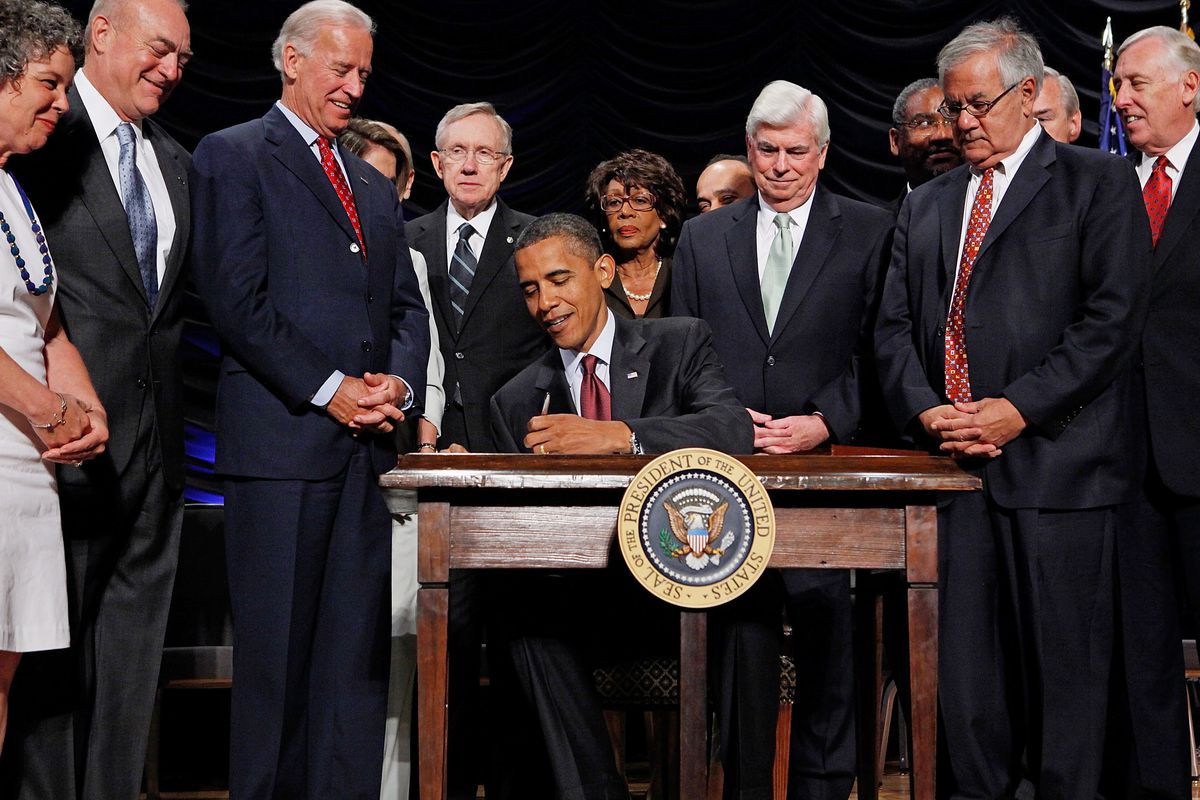Dodd-Frank Wall Street Reform and Consumer Protection Act 101
Anyone in finance knows of the Dodd-Frank Wall Street Reform and Consumer Protection Act. But anyone in finance doesn’t necessarily know what it is, what it did/does, or how it matters today.
What it is:
A 2,300-page stack of legislation passed in 2010 in the wake of the 2008 financial crisis. It’s named after sponsors Sen. Christopher J. Dodd (D-Conn.) and Rep. Barney Frank (D-Mass.).
What it did/does:
Establish new government agencies tasked to enforce the act, overseeing parts of the financial world like banks, mortgage lenders, and credit rating agencies.
Here are some of its key provisions:
1. Ensuring financial stability. The Financial Stability Oversight Council and Orderly Liquidation Authority are tasked to monitor the financial stability of major financial firms (considered “too big to fail”), whose failure could cripple the U.S. economy.
2. Preventing predatory mortgage lending. The Consumer Financial Protection Bureau (CFPB) was established to prevent another subprime mortgage market catastrophe (2008). It also addresses consumer complaints and governs other types of consumer lending.
3. Investing limitations for banks. The Volcker Rule:
– Limits speculative trading.
– Eliminates proprietary trading.
– Prohibits banks from getting involved with hedge funds or private equity firms, which are considered too risky.
– Prohibits trading proprietarily without sufficient “skin in the game.”
4. Regulating derivatives. Centralized exchanges were set up for credit default swaps trading, reducing the possibility of counterparty defaults and requiring more disclosure of swaps trading information.
5. Ensuring reliable credit ratings. The SEC Office of Credit Ratings was created to ensure the credit rating agencies are providing meaningful and reliable credit ratings.
6. Empowering employees. The existing whistleblower program—from the 2002 Sarbanes-Oxley Act (SOX)—was expanded. It enabled whistleblowers to receive 10-30% of the proceeds from a litigation settlement; it broadened the scope of covered employees, and it extended the statute of limitations under which whistleblowers can bring forward a claim against their employer.
How it matters today:
Dodd-Frank still matters. We still operate in a highly regulated system. But…it matters a little less.
In 2018, Congress passed the Economic Growth, Regulatory Relief, and Consumer Protection Act—designed to ease portions of Dodd-Frank.
1. Increasing the asset threshold for the application of prudential standards, stress test requirements, and mandatory risk committees for small and regional banks.
2. Decreasing capital requirements and leverage ratios for large custodial institutions that have custody of clients’ assets but do not function as lenders or traditional bankers.
3. Exempts escrow requirements for residential mortgage loans held by depository institutions or credit unions (under certain conditions).
4. Setting up standards for Freddie Mac and Fannie Mae to consider alternative credit scoring methods.
5. Exempts smaller lenders with assets of less than $10 billion from Volcker rule requirements and imposes less stringent reporting and capital norms on small lenders.
6. Allowing consumers to “freeze” their credit files at the three major credit reporting agencies (at no cost) in order to deter fraud.
Sources: investopedia.com; cftc.gov
Call 844-433-6683 or email info@fallerfinancial.com to sell your mortgage Note or request a consultation at fallerfinancial.com/contact.



